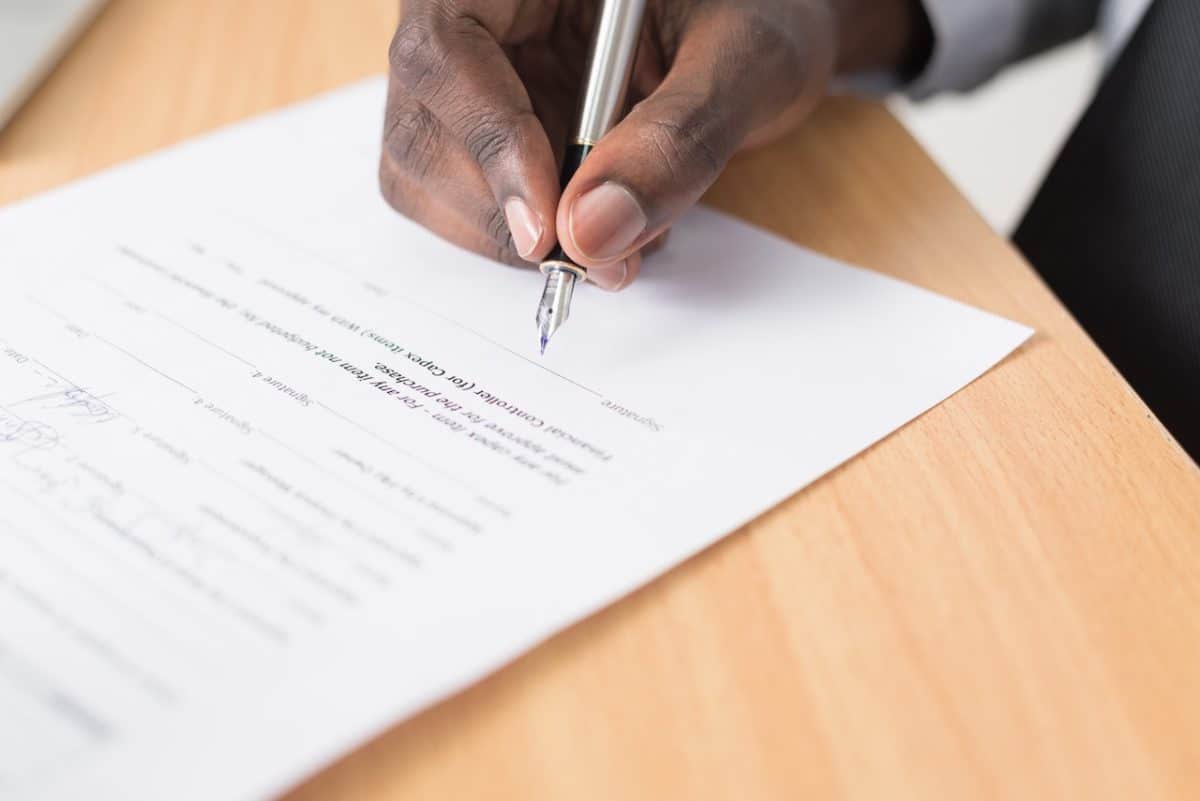
We all know that before we can rent an apartment, we have to sign some sort of paperwork. In most cases, we’re signing a standard lease–a document that officially outlines the terms under which one party agrees to rent property from another party. The agreement is legally binding, and ensures both renters rights and landlord rights. Now, let’s break down what actually goes into a standard lease agreement.
Here’s a quick outline of the sections that should be included in your lease, followed by an in-depth description of each:
- Names of all parties
- Property location and description
- Terms and limits of occupancy
- Rent and utilities
- Security deposit and late fees
- Alterations, repairs, and maintenance
- Access to property
- Pets
- Other legal restrictions
1. Names of All “Parties”
First and foremost, the lease agreement should include all potential tenants and the landlord or property management company. Each individual living in the unit must sign the lease agreement. This ensures that everyone is bound by the terms stated in the document and legal action can be taken if any of the terms are broken. The landlord or property manager will sign the standard lease agreement, as well.
2. Property Location and Description
The “premises” states where the unit is located. It should also identify the type of place that is being rented; for example, it will state if it’s a condo, apartment, house, or in-law suite. This ensures that everyone is aware of the place being offered and there is no question about its exact location.
3. Terms and Limits of Occupancy
A standard lease agreement should state the beginning and ending terms of the lease so there’s a clear understanding of when you can move in and when you must move out. Lease agreements can be month to month or a full year, depending on what the landlord and tenant have agreed upon. If you have a month-to-month lease, you’ll want to know how many days’ notice you will be given if told to move out (it’s usually 30 days, but it can vary). That information should also be in this section of your lease.
4. Rent and Utilities
Rent is an important part of the lease agreement and both parties should agree on the price that is stated on the document. The lease should state an exact date showing when rent will be collected each month. This will ensure there is no confusion when it comes to paying the correct amount each month and the date it must be paid.
Your lease should also outline which utilities are your responsibility and which ones your landlord or property manager will cover. Some apartment complexes cover water or garbage, while others leave everything completely up to the tenant. Your lease will explicitly state which ones you’re responsible for paying.
5. Security Deposits and Fees
Landlords usually collect a security deposit at the beginning of the lease; this money is essentially tucked away until move out and is the landlord’s way of holding you responsible for treating the property respectfully. There should be an exact value stated for the deposit, and it should be in writing in the lease agreement.
The security deposit is returned to you after move-out, so long as everything goes smoothly. There are ways to ensure you get your security deposit back when you move out, but the best place to start is by knowing what your lease states. It should contain information about the condition your apartment needs to be in upon move out and if you need to repair any damages before leaving.
6. Alterations, Repairs, and Maintenance
This is an important piece of the lease agreement because it indicates if you’re allowed to make alterations to the unit and explains how maintenance requests will be handled. If you want to make any alterations like paint the walls, install shelving, mount your TV on the wall, read this part of the lease to make sure it’s allowed.
In terms of repairs, this section should also state how to make maintenance requests, how long you should expect a repair to take, and which repairs (if any) are your responsibility to make yourself.
7. Access to Property
As a precaution, the lease agreement should also state the landlord’s right to access the property if a situation arises or a maintenance request is made. This prevents claims of illegal entry. This section should also state that you’ll be notified beforehand–and how much of an advanced notice will be given–if the landlord visits the premise. Before you sign the agreement, speak to or ask your landlord about what kind of access they will have to the property so it’s not a surprise to you.
8. Pets
There will often be a segment regarding whether or not the apartment is pet-friendly. Even if pets are allowed on the premises, this portion of the agreement should state any restrictions and indicate any special cleaning requirements involving your pet.
9. Other/Legal Restrictions
A section is needed to make sure that both parties are aware of all the laws that bind them to this legal document. This may include “health and safety codes”, as well as state laws that must be followed in a household. The lease should explicitly restrict illegal activity so that other residents and/or neighbors will not file lawsuits.
Keep in mind there are many other things that could be included in a lease agreement such as a smoking policy, parking spaces and restrictions, subletting, limits on guest stays (Airbnb restrictions), lease termination, and noise levels.
Read the lease agreement before signing it to make sure you’re aware of everything before moving into your new apartment.
